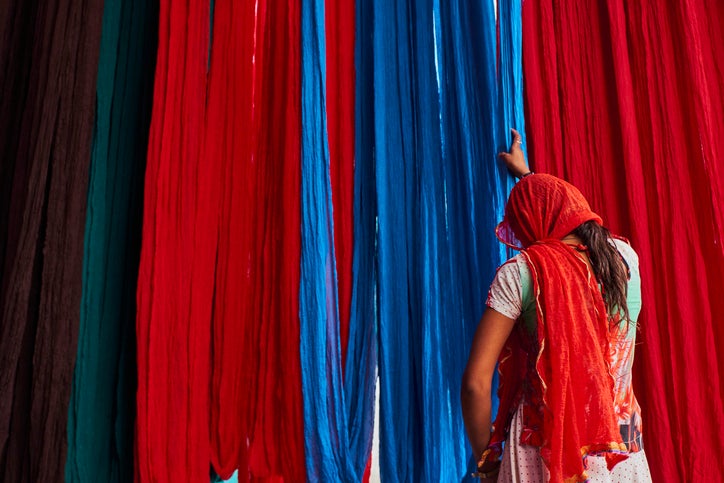Bangladesh experiences decline in women’s workforce participation – Apparel Resources

Report on Female Labour Force Participation in Bangladesh and its Implications for Sustainable Development Goals (SDGs)
Executive Summary
A recent report from the Bangladesh Bureau of Statistics (BBS) indicates a significant decline in the nation’s labour force, with women disproportionately affected. The Labour Force Survey 2024 reveals a reduction of 1.7 million workers in one year, with female participation dropping by 1.6 million. This trend presents a substantial challenge to Bangladesh’s progress towards key Sustainable Development Goals (SDGs), particularly SDG 5 (Gender Equality) and SDG 8 (Decent Work and Economic Growth). The decline reverses a decade-long trend of increasing female employment and highlights structural barriers that impede inclusive economic development.
Key Statistical Findings (2023-2024)
- Total Labour Force Reduction: The workforce decreased from 7.34 crore in 2023 to 7.17 crore in 2024.
- Female Workforce Decline: The number of female workers fell sharply from 2.53 crore to 2.37 crore.
- Male Workforce Stability: Male participation remained relatively constant at approximately 4.8 crore.
- Historical Context: This marks the first recorded decrease in labour participation since 2010, interrupting a period of significant growth driven primarily by women entering the workforce.
Analysis of Decline in Relation to SDG 5 (Gender Equality)
The sharp drop in female employment is a direct setback to achieving SDG 5, which aims to ensure women’s full and effective participation and equal opportunities in economic life. The analysis identifies several factors undermining this goal:
- Structural Economic Shifts: The national economic transition away from agriculture has not been matched by a corresponding increase in formal employment opportunities for women in the manufacturing and service sectors.
- Barriers for Educated Women: Highly educated urban women face significant hurdles, including a lack of job opportunities aligned with their qualifications, inadequate childcare infrastructure, and persistent social constraints.
- Rural Employment Challenges: Women in rural areas have limited access to capital, markets, and information, which restricts their engagement in non-farm activities and often relegates them to temporary or unpaid agricultural labour.
Challenges to SDG 8 (Decent Work and Economic Growth)
The trend reflects broader issues related to the quality of economic growth and the failure to provide decent work for all, as mandated by SDG 8. Key challenges include:
- Jobless Growth: Sluggish overall job creation negatively impacts employment prospects, particularly for women, hindering progress towards full and productive employment.
- Automation and Skills Gap: Technological advancements in the garment industry have reduced women’s share of the workforce from over 80% to approximately 65%. This highlights a critical need for upskilling and training to ensure women can compete in an evolving job market, linking directly to SDG 4 (Quality Education).
- Quality of Employment: A large portion of existing female employment is concentrated in low-quality, informal, and insecure roles, especially in rural settings. This fails to meet the “decent work” standard, which includes fair income, security, and social protection.
Policy Considerations for SDG Alignment
To reverse this negative trend and realign with SDG targets, policy interventions should focus on creating an enabling environment for female employment. Based on expert analysis, key areas for action include:
- Sectoral Job Creation: Expand employment opportunities in modern service sectors such as healthcare, education, finance, and hospitality to absorb the growing pool of educated women.
- Supportive Infrastructure: Invest in critical infrastructure, particularly childcare facilities, to remove a primary barrier preventing women from entering and remaining in the workforce, thereby advancing SDG 5.
- Rural Economic Empowerment: Enhance women’s access to capital, markets, and information to promote entrepreneurship and formal employment in rural non-farm activities, contributing to SDG 1 (No Poverty) and SDG 10 (Reduced Inequalities).
- Skills Development: Implement targeted reskilling and upskilling programs to equip women with the necessary competencies for technologically advanced roles in manufacturing and other growth sectors, in line with SDG 4 and SDG 8.
Analysis of Sustainable Development Goals in the Article
1. Which SDGs are addressed or connected to the issues highlighted in the article?
-
SDG 5: Gender Equality
The article’s central theme is the decline in women’s workforce participation in Bangladesh. It discusses the structural barriers, social constraints, and economic factors that specifically affect women’s employment, directly relating to the goal of achieving gender equality and empowering all women and girls.
-
SDG 8: Decent Work and Economic Growth
The article focuses on labor force statistics, job creation, and the quality of employment. It highlights issues like “jobless growth,” the impact of automation on jobs in the garment industry, and the need for skilled employment, all of which are core components of SDG 8, which aims to promote sustained, inclusive, and sustainable economic growth, full and productive employment, and decent work for all.
-
SDG 4: Quality Education
The article connects women’s labor force participation to educational enrollment, noting that rising education levels can temporarily keep women out of the job market. It also emphasizes the need for higher skills and training to adapt to technological advancements in industries like garment manufacturing, linking directly to the goal of ensuring inclusive and equitable quality education and promoting lifelong learning opportunities.
2. What specific targets under those SDGs can be identified based on the article’s content?
-
Target 5.5: Ensure women’s full and effective participation and equal opportunities for leadership at all levels of decision-making in political, economic and public life.
The article directly addresses this target by detailing the sharp decline in female workforce numbers, from 2.53 crore to 2.37 crore. It discusses the barriers preventing women’s full economic participation, such as limited job opportunities, lack of childcare, and social constraints.
-
Target 8.5: By 2030, achieve full and productive employment and decent work for all women and men, including for young people and persons with disabilities, and equal pay for work of equal value.
This target is central to the article’s discussion of “jobless growth” and the overall reduction of 17 lakh individuals in the labor force. The analysis of the quality of women’s employment, particularly the prevalence of unpaid or temporary rural work versus formal, skilled urban jobs, speaks directly to the goal of achieving “decent work for all.”
-
Target 8.2: Achieve higher levels of economic productivity through diversification, technological upgrading and innovation, including through a focus on high-value added and labour-intensive sectors.
The article mentions that increased automation and technology in the garment industry have reduced women’s share of employment from over 80% to 65%. This highlights the challenge of technological upgrading and the need for the workforce to adapt, which is a key aspect of this target.
-
Target 4.4: By 2030, substantially increase the number of youth and adults who have relevant skills, including technical and vocational skills, for employment, decent jobs and entrepreneurship.
The article implies this target by stating that automation in the garment industry necessitates “higher skills and training for women to stay competitive.” The call to expand employment in modern service sectors like healthcare and finance also underscores the need for a workforce with relevant and advanced skills.
3. Are there any indicators mentioned or implied in the article that can be used to measure progress towards the identified targets?
- Female labour force participation rate: The article provides explicit data that can be used as an indicator. It states the total number of female workers declined from 2.53 crore in 2023 to 2.37 crore in 2024. It also mentions that the female labor force participation rate was reported at 43 percent in 2022, providing a clear metric to track progress.
- Proportion of women in specific sectors: The article provides a specific indicator for the garment industry, noting that women’s share of employment has fallen from “over 80 percent to approximately 65 percent.” This metric can be used to measure women’s participation in key manufacturing sectors.
- Quality of employment (formal vs. informal/unpaid): The article implies this indicator by contrasting formal, skill-based urban jobs with unpaid or temporary rural work. It notes that much of the recent growth in female employment was in rural agriculture, often of a temporary nature, highlighting the need to measure the proportion of women in decent, formal employment.
- Skills and educational attainment of the female workforce: This is an implied indicator. The discussion about automation requiring “higher skills and training” and the need for jobs aligned with the aspirations of “highly educated urban women” suggests that tracking the skill level and educational background of women in the labor force is crucial for measuring progress.
4. SDGs, Targets, and Indicators Table
| SDGs | Targets | Indicators |
|---|---|---|
| SDG 5: Gender Equality | Target 5.5: Ensure women’s full and effective participation and equal opportunities for leadership at all levels of decision-making in political, economic and public life. |
|
| SDG 8: Decent Work and Economic Growth | Target 8.5: By 2030, achieve full and productive employment and decent work for all women and men… and equal pay for work of equal value. |
|
| SDG 8: Decent Work and Economic Growth | Target 8.2: Achieve higher levels of economic productivity through diversification, technological upgrading and innovation… |
|
| SDG 4: Quality Education | Target 4.4: By 2030, substantially increase the number of youth and adults who have relevant skills, including technical and vocational skills, for employment, decent jobs and entrepreneurship. |
|
Source: apparelresources.com

What is Your Reaction?
 Like
0
Like
0
 Dislike
0
Dislike
0
 Love
0
Love
0
 Funny
0
Funny
0
 Angry
0
Angry
0
 Sad
0
Sad
0
 Wow
0
Wow
0



















































.jpg.webp?itok=0ZsAnae9#)

























